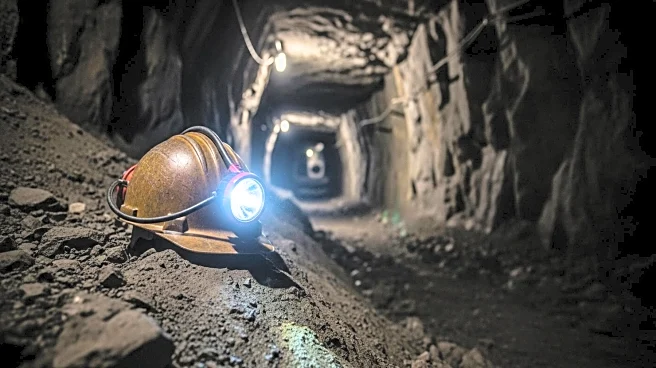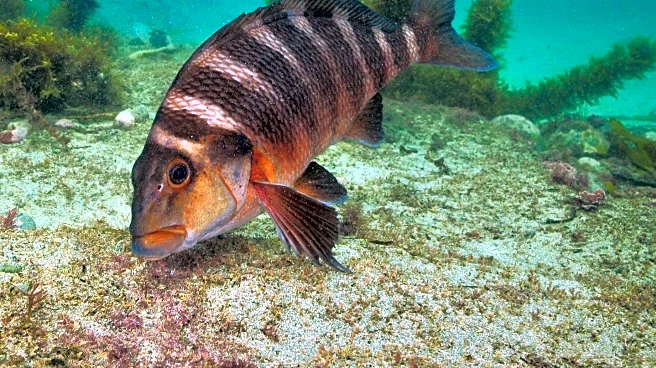What's Happening?
Divers in Indonesia have successfully captured the first underwater photographs of a living Sulawesi coelacanth, a species known as Latimeria menadoensis. This prehistoric fish, often referred to as a 'living fossil,' was filmed at a depth of 144 meters off the coast of North Maluku. The footage, published in Scientific Reports, marks a significant milestone in marine exploration and evolutionary research. The coelacanth, with its lobed fins and slow-motion drift, was previously thought to be extinct until a specimen was discovered in 1938. The recent sighting challenges previous assumptions about the species' behavior and distribution, suggesting a broader habitat range than previously known.
Why It's Important?
The discovery of the Sulawesi coelacanth is crucial for understanding evolutionary biology, as these fish are part of the Sarcopterygii clade, sharing a closer genetic relationship with land vertebrates than with modern bony fishes. This find highlights the importance of the mesophotic zone, a deep-water habitat that supports ancient species with low reproductive rates and long lifespans. The coelacanth's vulnerability to environmental changes underscores the need for conservation efforts. The IUCN Red List currently classifies the species as Vulnerable, with threats from industrial fishing, pollution, and deep-sea mining. This discovery could lead to new conservation measures and protected marine areas.
What's Next?
Following this discovery, researchers plan to return to the site in 2026 with non-invasive sampling tools to gather environmental DNA. This will help determine whether the Maluku coelacanths are part of a larger metapopulation or genetically distinct. The findings could inform the establishment of marine protected areas and seasonal fishing regulations. Indonesia's Ministry of Marine Affairs is reportedly drafting guidelines to protect deep reef ecosystems, though implementation will depend on regional funding and cooperation. Conservationists warn that increased media attention could lead to unregulated eco-tourism, further threatening the species.
Beyond the Headlines
The sighting of the coelacanth in open water, rather than hiding in caves as previously assumed, challenges longstanding beliefs about its behavior. This discovery emphasizes the need to reassess our understanding of deep-sea ecosystems and the species that inhabit them. Protecting the coelacanth is not just about preserving a relic of the past but recognizing the critical biodiversity that the deep sea holds. The ongoing research and conservation efforts could provide insights into the resilience and adaptability of ancient species in the face of modern environmental challenges.











